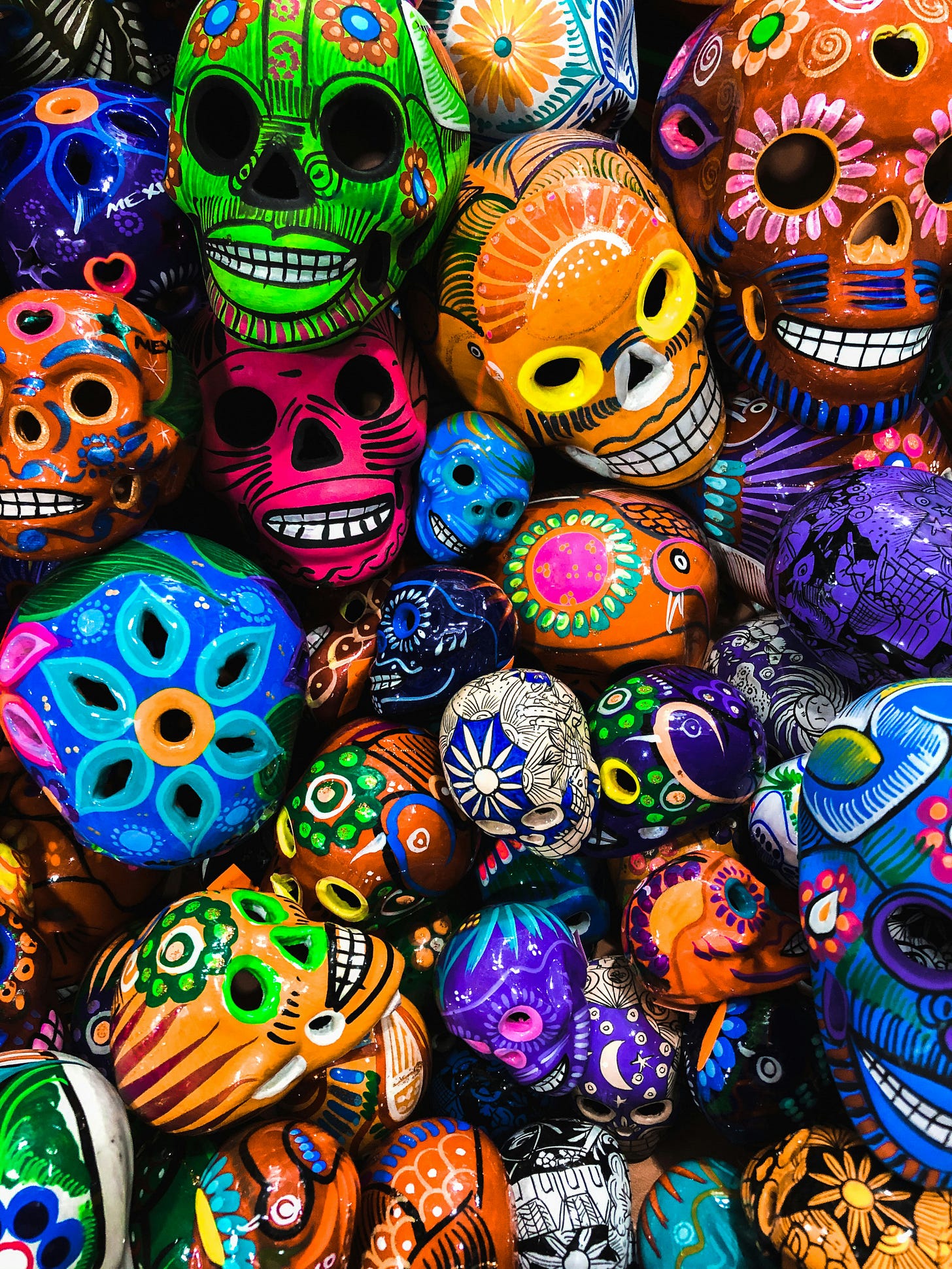
As we approach Día de los Muertos observances this weekend, US authorities are issuing warnings to anyone traveling to Mexico to purchase items to celebrate the holiday. Many agricultural items commonly used in holiday decorations and traditional offerings traditionally used to mark Día de los Muertos can’t be legally imported into the US from Mexico.
US Customs & Border Protection (CBP) Agriculture Specialists frequently encounter prohibited items intended for altars (ofrendas) and gravesites during this period. These items can carry harmful pests and diseases that threaten American agriculture and natural resources.
Forbidden Flowers:

At the top of that list are Traditional Aztec Marigolds (Cempasuchil).
These flowers are crucial for Día de los Muertos because their vibrant sun-like color and strong scent are believed to guide spirits back to the world of the living. They are used to create paths to altars (ofrendas), adorn graves, and symbolize life, and have been sacred since the time of the Aztecs.
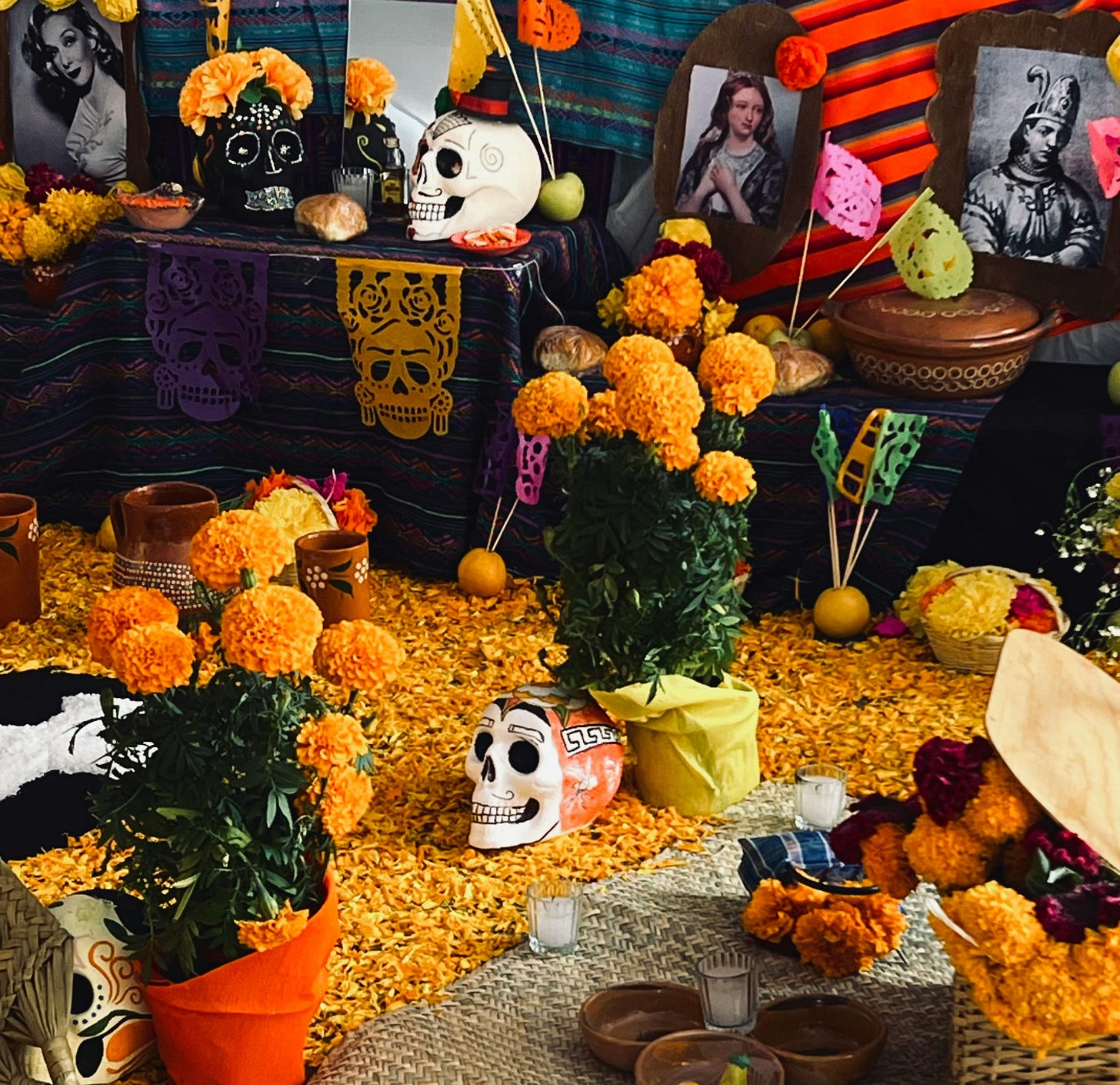
Although beautiful and essential to the holiday, Traditional Aztec Marigolds (Cempasuchil) are prohibited from being brought into the United States from Mexico because they can host the destructive cottonseed bug (Oxycarenus hyalinipennis), a pest capable of causing significant damage to the U.S. cotton industry.
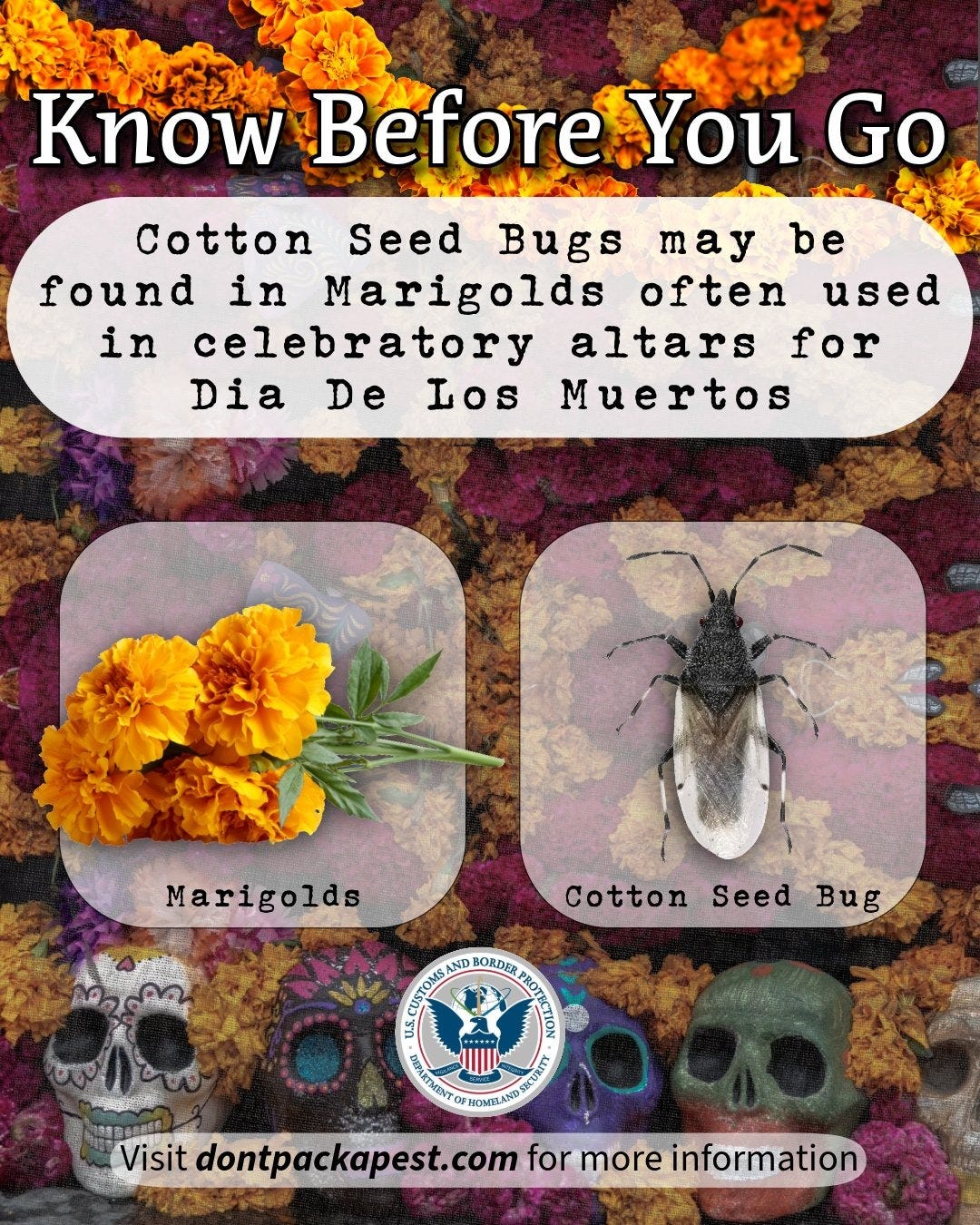
Other prohibited flowers include Chrysanthemums, which are used during Día de los Muertos to symbolize purity, peace, and spiritual connection. They are often placed on altars or in gravesites, sometimes alongside the more prominent orange marigolds, as part of the larger floral decorations that honor loved ones.

Mexican Chrysanthemums cannot be brought into the U.S. through passenger ports of entry because they pose a risk of carrying Chrysanthemum White Rust. This fungal disease is a significant threat to domestic flower growers.
Forbidden Foilage:
Ornamental greenery such as Murraya, also known as Orange Jasmine, is often used in traditional altars during Día de los Muertos in the Yucatán Peninsula (celebrated there as a Mayan holiday called Hanal Pixán, which translates to “Food for the Souls”).
Known by the Mayans as xunan-che, the leafy Orange Jasmine branches add the color green to altars (which represents life and the center of the world).
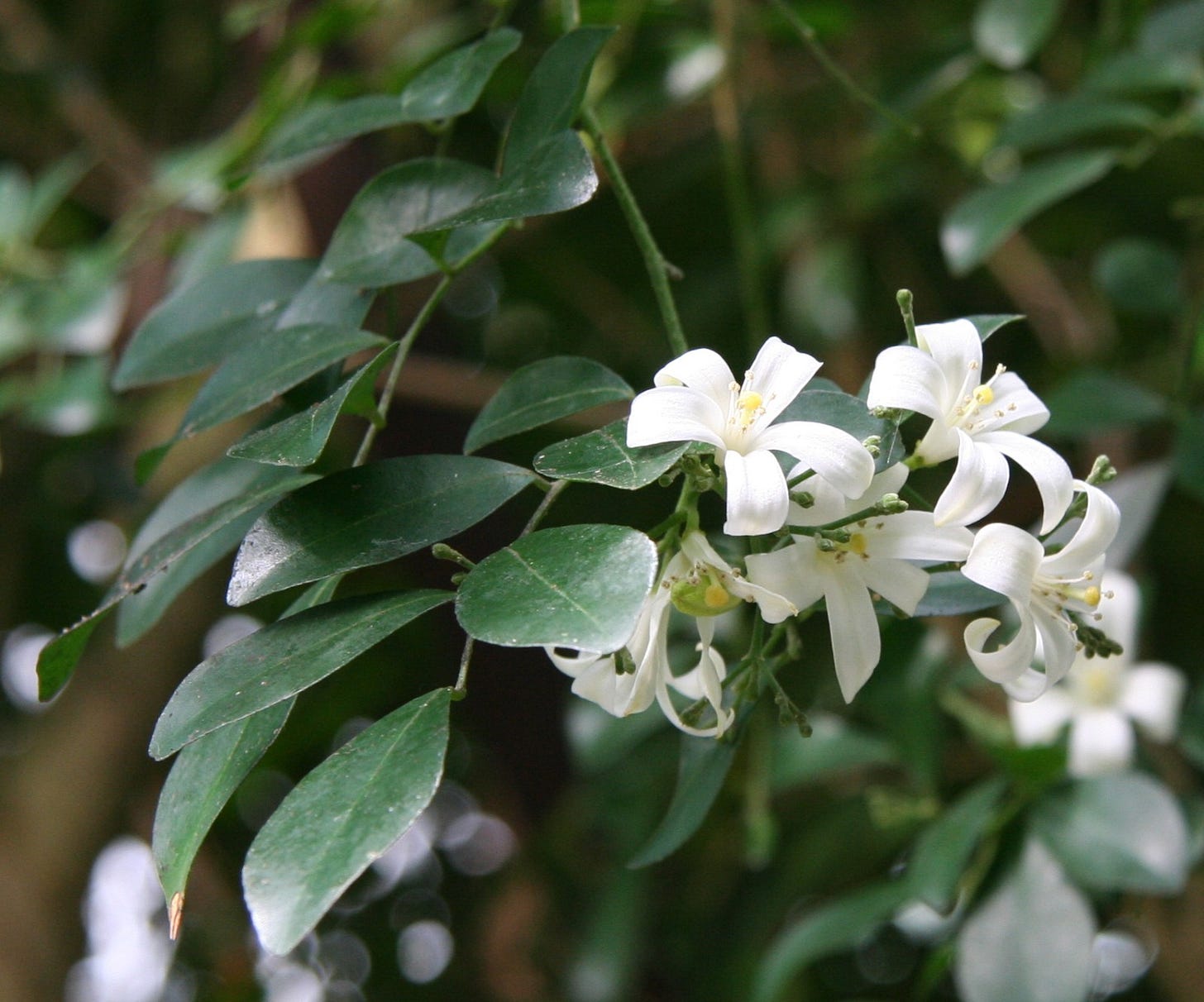
Murraya is a host plant for the Asian citrus psyllid (Diaphorina citri Kuwayama), an insect that carries citrus greening disease (”huanglongbing”). This devastating disease severely impacts citrus varieties and ornamental plants, posing a grave threat to the U.S. citrus industry.
Forbidden Fruit:
During Día de los Muertos, fruit is an important offering on ofrendas (altars) to welcome and nourish the spirits of the deceased, representing sustenance from the earth and their favorite foods. Fruits like apples, oranges, and mangoes are used as vibrant decorations, and some also believe orange is a color that visiting souls can see, making it a way to help them find their way.
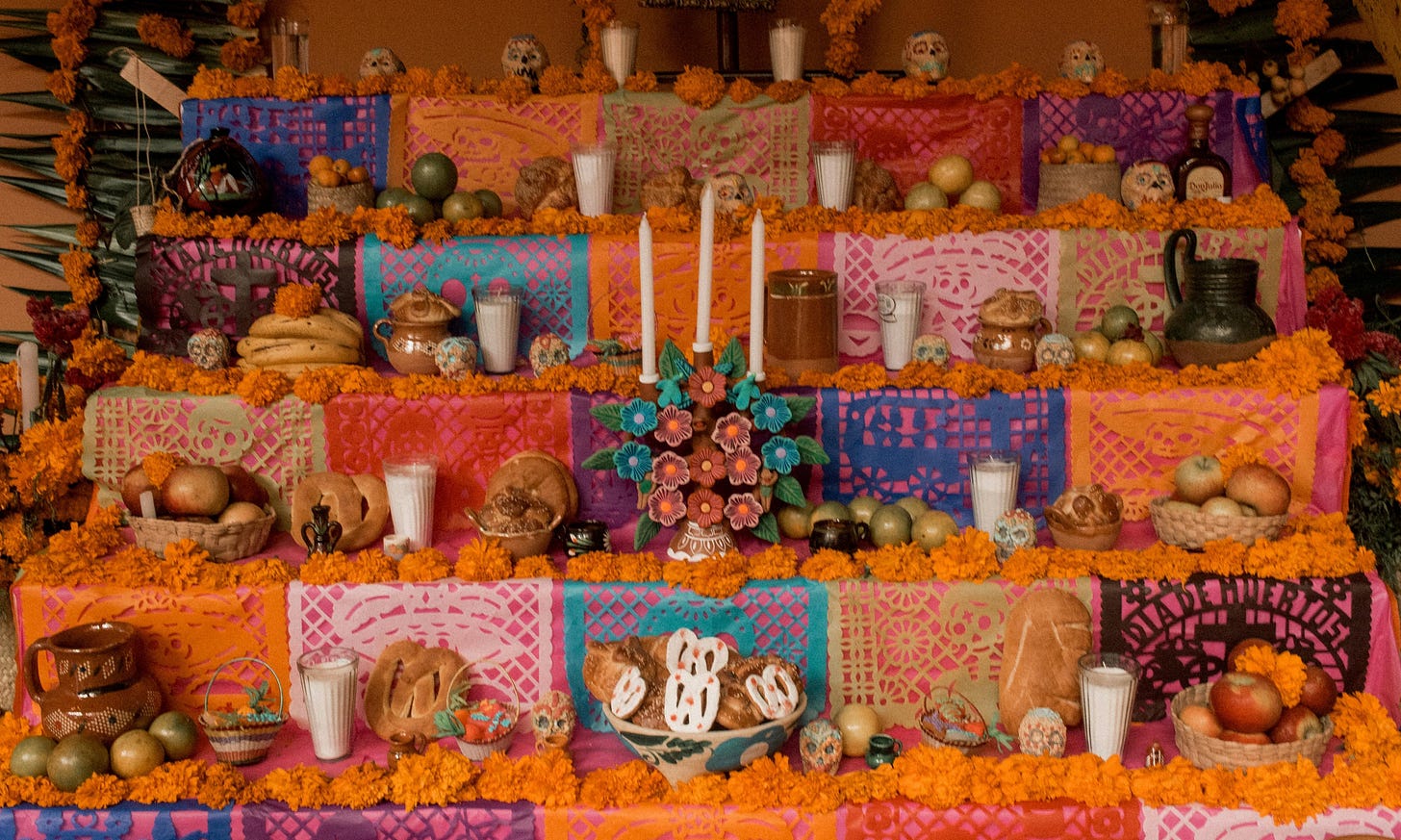
Uninspected Mexican fruit is prohibited from being brought into the U.S. to prevent the introduction of foreign pests and diseases, such as the Asian citrus psyllid and the bacterium that causes huanglongbing (HLB). HLB is a severe citrus disease that leads to the death of citrus trees and significantly reduces fruit production (and for which there is currently no cure).
Prohibited citrus fruits commonly include oranges, grapefruit, tangerines, sour oranges, and sweet limes. Other popular fruits such as guavas, mangoes, peaches, and pomegranates are also restricted.
Failure to declare prohibited agricultural items can result in significant fines. Penalties for undeclared, prohibited personal importations typically start at $300 and can escalate, while commercial importations can face fines up to $250,000.
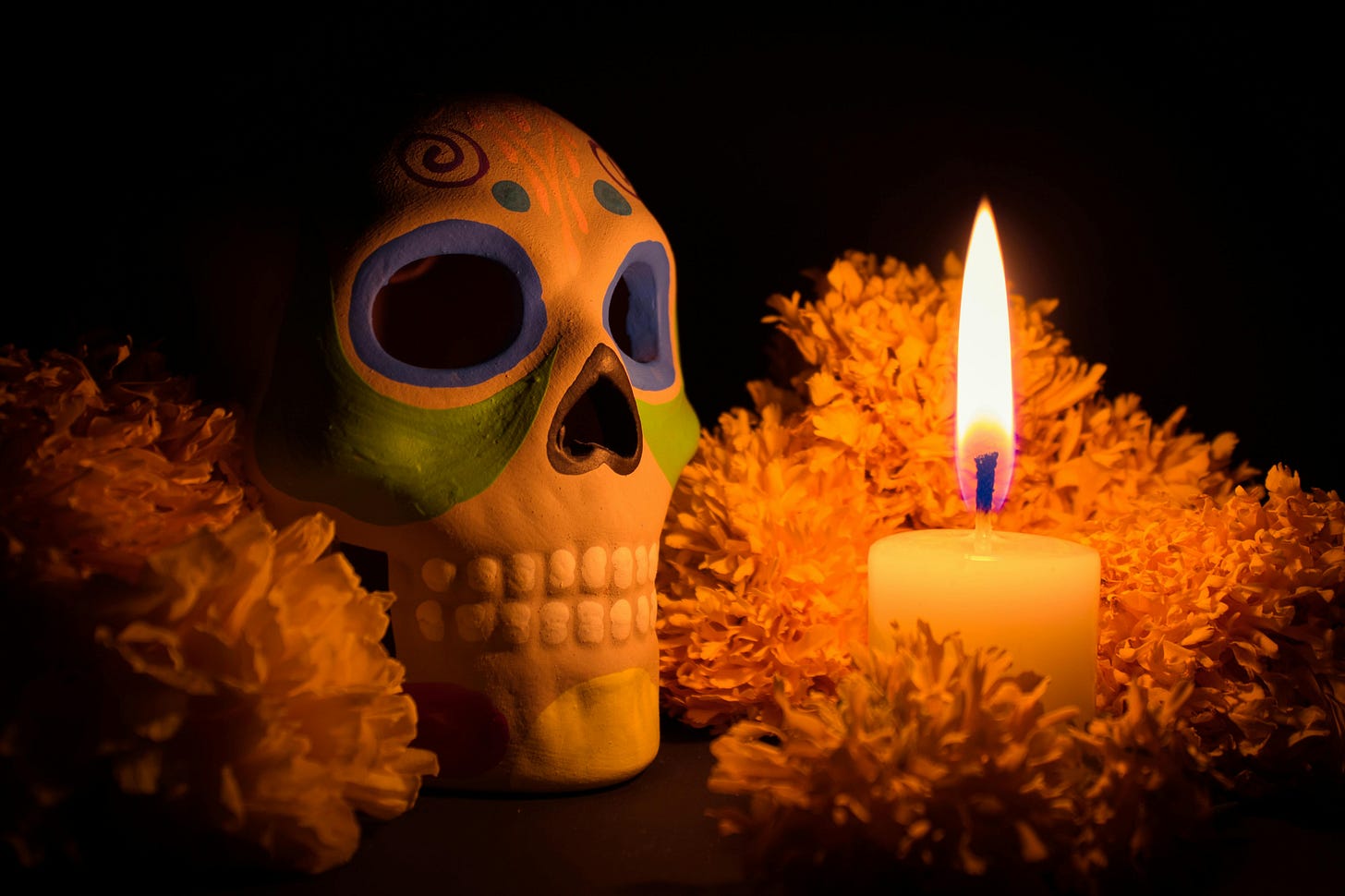
By planning ahead and following these regulations, travelers can celebrate Día de los Muertos while helping CBP protect American agriculture.
Do you have plans for Día de los Muertos?
Share them in the comments to this article.
NEW FEATURE! Would you like US Border News articles to appear in your Google News feed? Click the button below!
Abrazos,
Jack Beavers,
US Border News Editor




